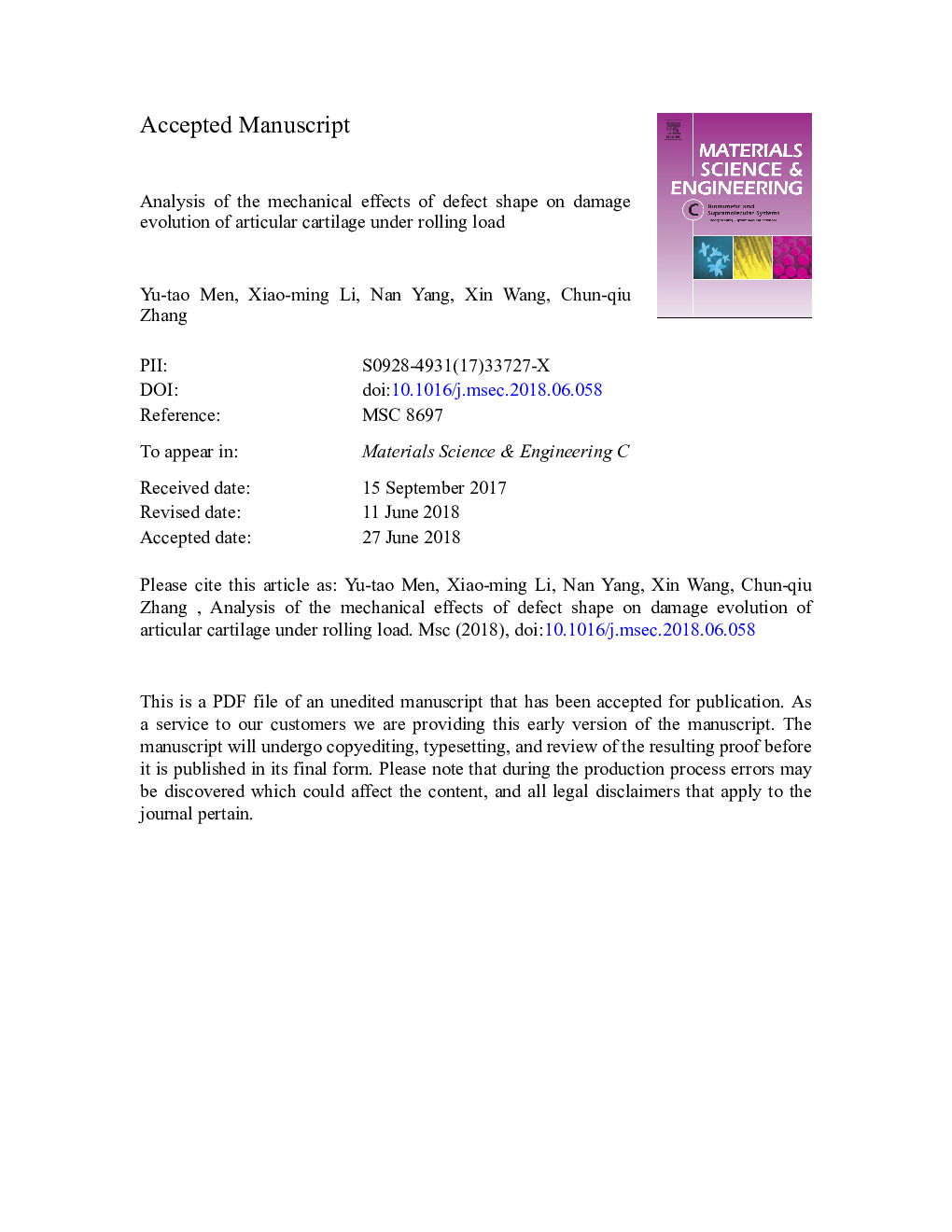| کد مقاله | کد نشریه | سال انتشار | مقاله انگلیسی | نسخه تمام متن |
|---|---|---|---|---|
| 7865785 | 1509129 | 2018 | 22 صفحه PDF | دانلود رایگان |
عنوان انگلیسی مقاله ISI
Analysis of the mechanical effects of defect shape on damage evolution of articular cartilage under rolling load
ترجمه فارسی عنوان
تجزیه و تحلیل اثر مکانیکی شکل نقص در تکامل آسیب غضروف مفصلی تحت بار نورد
دانلود مقاله + سفارش ترجمه
دانلود مقاله ISI انگلیسی
رایگان برای ایرانیان
کلمات کلیدی
غضروف، خسارت، کاستی، بار رول، تحلیل عددی،
موضوعات مرتبط
مهندسی و علوم پایه
مهندسی مواد
بیومتریال
چکیده انگلیسی
To study the mechanical effects of defect shape on the damage evolution of knee cartilage and find the causes of fragments, so as to obtain damage evolution rules and determine the most appropriate shape used in a clinical repair. A porous viscoelasticity fiber-reinforced 2D numerical model with different micro-defect shapes was established which considered the depth-dependent Young's modulus, fiber distribution, porosity and permeability. The stress-strain relationship, interstitial hydraulic and interstitial flow velocity was obtained under rolling load. The results showed that damage developed at the bottom corner of the defect, preferentially deep within the cartilage tangential to the fibers direction, and then extended to the surface along adjacent fibers, finally forming fragments. In the early stages of damage, the shear stress and interstitial flow velocity within cartilage with a rectangular cross-sectional defect were the lowest, while interstitial hydraulic pressure was the highest, followed by 100° trapezoid and semicircle, and finally 80° trapezoid defects. In the later stage of damage, the results were very similar. The shear strain, interstitial flow velocity and interstitial hydraulic pressure decreased with increasing defect depth. Therefore, defect shape only affected damage evolution in the early stages. The fragments in cartilage were the result of the damage evolution which sizes were correlated with the initial defect depth. The damage velocity of cartilage with a rectangular section-incision was the slowest. Finally, we concluded that cylindrical incisions are optimal in clinical surgery. These results provide a theoretical basis for the clinical interpretation of pathological degeneration and repair therapy.
ناشر
Database: Elsevier - ScienceDirect (ساینس دایرکت)
Journal: Materials Science and Engineering: C - Volume 92, 1 November 2018, Pages 407-415
Journal: Materials Science and Engineering: C - Volume 92, 1 November 2018, Pages 407-415
نویسندگان
Yu-tao Men, Xiao-ming Li, Nan Yang, Xin Wang, Chun-qiu Zhang,
